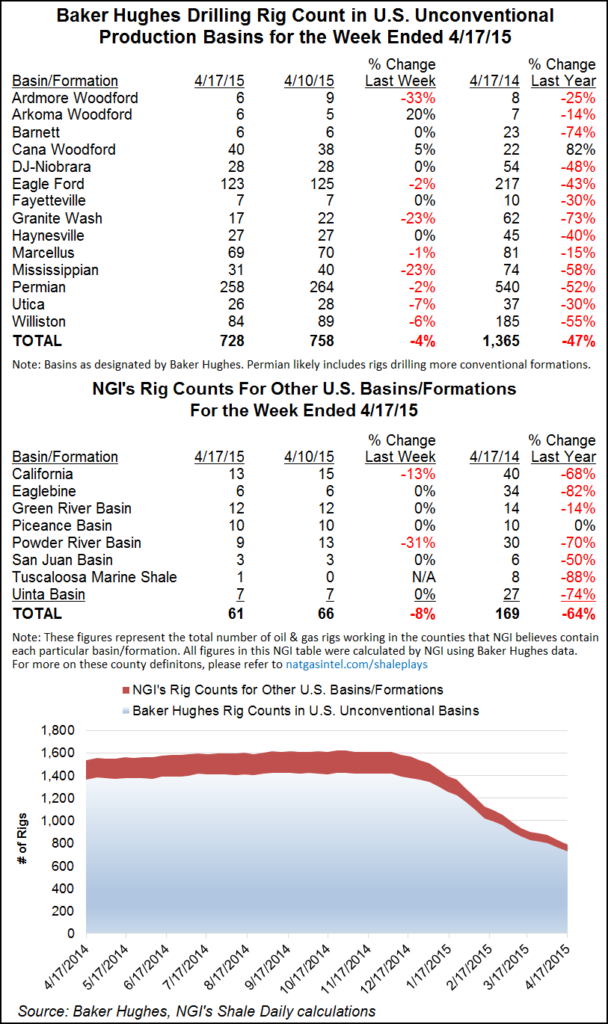Rigs, Texas Well Permitting, Houston Oil/NatGas Jobs All Rising
Ten U.S. land-based drilling rigs returned to action during the week just ended, according to Baker Hughes Inc. (BHI). The week ended with 823 rigs active on land, more than twice the 409 that were running one year ago.

One inland waters rig and one offshore unit left play, making for a net gain of eight U.S. rigs. Eleven oil rigs came back, partially offset by the departure of three natural gas units. Seven directionals left, but 11 horizontals returned along with four vertical rigs.
Canada dropped 14 units (two oil and 12 natural gas). The Canadian count ended the week at 118, well above the year-ago level of 40 active units.
New Mexico was the hottest state, picking up seven rigs, and the Permian Basin was the hottest play, adding eight units during the week.
BHI said the average U.S. rig count for March was 789, up 45 from the 744 counted in February and up 311 from the 478 counted in March 2016. The average Canadian rig count for March was 253, down 89 from the 342 counted in February and up 165 from the 88 counted in March 2016.
The international rig count for March was 943, up two from the 941 counted in February and down 42 from the 985 counted in March 2016. The international offshore rig count for March was 197, down three from the 200 counted in February and down 14 from the 211 counted in March 2016. The worldwide rig count for March was 1,985, down 42 from the 2,027 counted in February and up 434 from the 1,551 counted in March 2016.
The Railroad Commission of Texas (RRC) issued 1,310 original drilling permits in March compared to 511 in March 2016. The March total included 1,144 permits to drill new oil or gas wells, 11 to re-enter plugged wellbores and 155 for recompletions of existing wellbores. March permits were for 284 oil, 56 gas, 893 oil or gas, 51 injection, one service and 25 “other” wells
In March RRC staff processed 586 oil, 77 gas, 49 injection and zero other completions compared to 947 oil, 194 gas, 33 injection and eight other completions in March 2016. Total well completions for 2017 year to date are 1,925, which is down from 3,452 recorded during the same period in 2016.
In a recent note the Federal Reserve Bank of Dallas said that during previous oil recoveries, it took about one year for mining-related job growth in Houston to turn positive once the oil price had hit bottom. West Texas Intermediate crude bottomed out at $30/bbl in February 2016, the Fed said, “and while the data since September are subject to revision, February 2017 mining-related job growth ticked up (1,932). That increase was driven by the support activities for mining and fabricated metals sectors — the most cyclical parts of the energy business. The latter was also the driving force in recent manufacturing job growth.”
© 2024 Natural Gas Intelligence. All rights reserved.
ISSN © 2577-9877 | ISSN © 2158-8023 |
